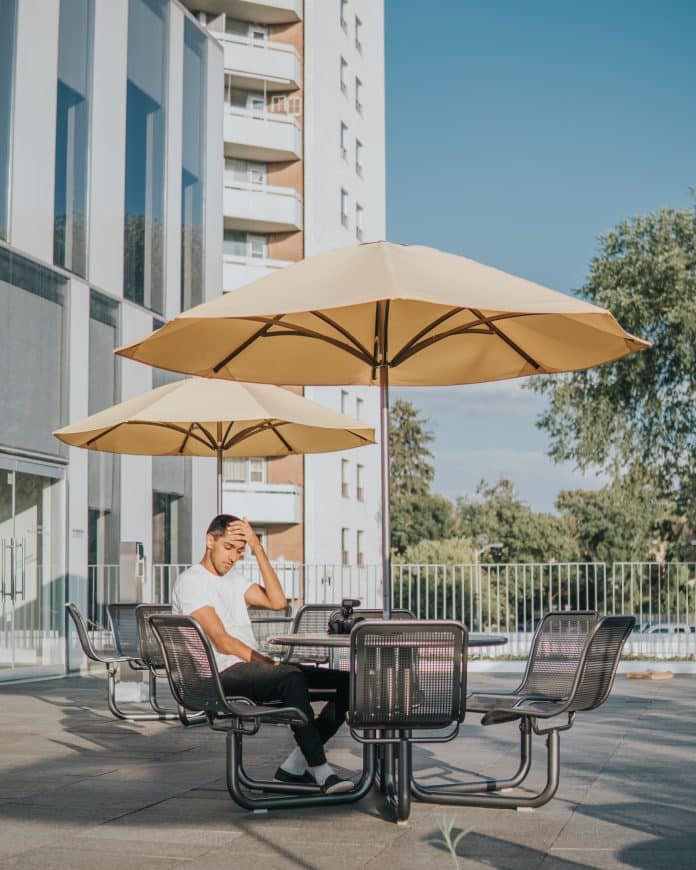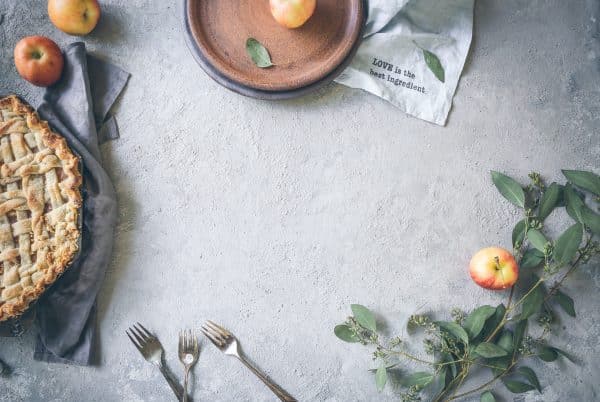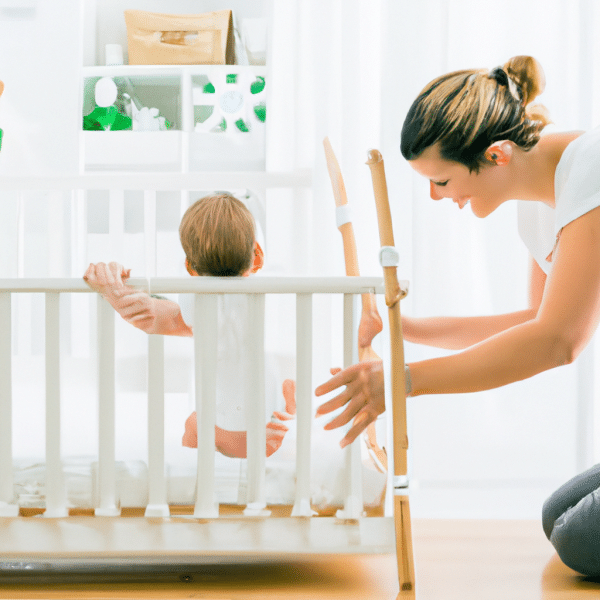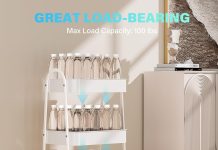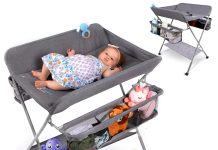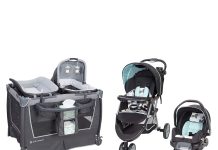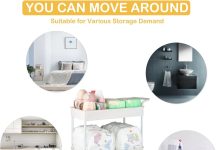Having a baby is an exciting journey, filled with love and joy. However, it also comes with a lot of responsibilities, including ensuring the safety of your little one. One potential hazard that parents often worry about is their baby falling off the changing table during diaper changes. In this article, we will explore some practical and effective ways to baby-proof a changing table to prevent falls and injuries, providing you with peace of mind and a safe environment for your precious bundle of joy.
Review contents
Choose a Safe Changing Table
When it comes to selecting a changing table for your little bundle of joy, safety should be the top priority. A sturdy construction is essential to ensure a durable and reliable piece of furniture. Look for a changing table made from solid, high-quality materials that can withstand daily use and the weight of your baby. Non-toxic materials are also crucial to protect your child from harmful chemicals or allergens. Opt for tables made from natural or certified safe materials.
Another important aspect to consider is a stable base. Choose a changing table with a wide and solid base to prevent it from tipping over. This will provide stability and minimize the risk of accidents. Stability is particularly crucial when your baby starts moving and becomes more active during diaper changes. Make sure the table has a firm and secure footing on the floor.
To further enhance the safety of your changing table, look for models that include safety straps. These adjustable straps ensure that your baby is securely fastened to the table during diaper changes. Safety straps are designed to prevent your child from rolling or falling off the table, offering you peace of mind while you attend to their needs.
Secure the Changing Table to the Wall
Even with a sturdy and stable changing table, it is important to secure it to the wall to prevent any accidents caused by tipping or leaning. There are a few different methods you can use to accomplish this.
Using wall anchors is an effective way to secure your changing table. These anchors provide a strong attachment to the wall, ensuring that the table stays firmly in place. Make sure to install the wall anchors correctly, following the manufacturer’s instructions for maximum safety.
Mounting brackets are another option to secure your changing table to the wall. These brackets can be attached to the back of the table and then anchored to the wall, offering an extra layer of stability and preventing tipping or movement.
Regardless of the method you choose, it is crucial to ensure proper stability. Double-check that the changing table is securely attached to the wall, using a level to confirm that it is perfectly straight. Regularly inspect the attachment points to make sure they remain sturdy over time.
This image is property of images.unsplash.com.
Use a Changing Pad with Safety Features
The changing pad that you place on top of the changing table should also have safety features. Look for a pad with a non-slip surface to prevent your baby from sliding or slipping during diaper changes. This will provide a safer and more comfortable experience for both you and your child.
Safety straps are another essential feature to consider when selecting a changing pad. These straps should securely fasten your baby to the pad, preventing them from rolling or falling off the table. Make sure to always use the safety straps when changing your baby’s diaper, even for a quick change.
Contoured edges on the changing pad are an added safety measure. These edges help to keep your baby centered on the pad, reducing the risk of accidental falls. The contoured design also adds a layer of comfort for your baby, allowing them to relax while you change their diaper.
Keep Changing Supplies Within Reach
During diaper changes, it is important to have all the necessary supplies within easy reach. This will prevent you from having to leave your baby unattended and reduce the risk of accidents. Organize your changing table essentials in a convenient and accessible manner.
Consider using storage baskets or caddies to keep everything organized. Place diapers, wipes, creams, and any other frequently used items within arm’s reach. This will allow you to focus on your baby’s needs and avoid unnecessary distractions.
Avoid overreaching for supplies. Stretching too far or reaching for items on a high shelf can lead to accidents or strain. Keep everything within a comfortable reach, making diaper changes safer and more efficient.
It is also important to keep hazardous items, such as sharp objects or medications, out of your baby’s reach. Store them in a secure location, such as a locked cabinet or drawer, to prevent accidental ingestion or injury.
This image is property of images.unsplash.com.
Eliminate Hazards from the Surrounding Area
In addition to baby-proofing the changing table itself, it is essential to create a safe environment around it. This will minimize the risk of accidents or injuries when your baby starts moving or exploring.
Start by removing small objects from the area around the changing table. Babies are curious and tend to put everything they can find into their mouths. Small objects can pose a choking hazard, so it is crucial to keep the area clear of any potential dangers.
Secure cords and wires to prevent your baby from pulling on them or getting tangled. Use cord organizers or zip ties to keep them out of reach. This will protect your baby from electrical hazards or accidental falls caused by tripping on cords.
Cover electrical outlets near the changing table with outlet covers or safety plugs. This will prevent your baby from inserting their fingers or objects into the outlets, protecting them from electrical shocks.
Ensure Proper Lighting
Proper lighting is important for a safe and efficient diaper-changing experience. Adequate overhead lighting in the changing area will help you see clearly and ensure that you can attend to your baby’s needs effectively. Natural light or bright bulbs are ideal for providing optimal visibility.
Consider adding a night light to the changing area for nighttime diaper changes. This will provide a soft and gentle illumination, allowing you to see without disturbing your baby’s sleep. A night light can help prevent accidents or injuries caused by inadequate lighting during late-night diaper changes.
To ensure optimal lighting, it is essential to prevent shadows in the changing area. Shadows can make it difficult to see clearly and may hide potential hazards. Adjust the lighting sources and position the changing table in a way that minimizes shadows and maximizes visibility.
This image is property of images.unsplash.com.
Stay Focused and Never Leave a Baby Unattended
While it may seem obvious, it is crucial to emphasize that you should never leave your baby unattended on the changing table. Even a few seconds of inattention can lead to accidents or falls.
Always supervise your baby during diaper changes, keeping your attention focused on them at all times. Remain within arm’s reach to prevent any sudden movements or accidents. This will allow you to react immediately if your baby starts to roll or move unpredictably.
Minimize distractions during diaper changes to ensure your undivided attention. Avoid using your phone, watching TV, or engaging in any other activities that may take your focus away from your baby. By staying fully present during diaper changes, you can provide a safe and nurturing environment for your little one.
Remove Potential Climbing Objects
As your baby grows and becomes more mobile, they may develop a tendency to climb on furniture or grab onto hanging items. It is important to remove any potential climbing objects from the surroundings of the changing table.
Keep furniture, such as chairs or tables, away from the changing area to prevent your baby from using them as stepping stools or support. This will reduce the risk of falls or accidents caused by unstable furniture.
Secure hanging items, such as curtains or wall decorations, to avoid your baby pulling them down or becoming entangled. Use sturdy hooks or brackets to ensure that these items remain safely out of reach.
Creating a safe environment around the changing table is essential to prevent accidents or injuries as your baby explores their surroundings. By removing potential climbing objects, you can offer a secure space for diaper changes and minimize the risk of accidents.
Educate Other Caregivers and Visitors
If you have other caregivers or frequent visitors, it is important to educate them about the safety guidelines and rules you have established for the changing table area. Communication and consistent enforcement are key to ensuring a safe environment for your baby.
Share the safety guidelines and procedures with anyone who will be changing your baby’s diaper. Clearly explain the importance of staying focused, never leaving the baby unattended, and following the safety measures you have implemented. Encourage open communication and address any questions or concerns they may have.
Enforce the rules consistently to ensure that everyone understands and respects the safety measures you have put in place. Remind caregivers and visitors to follow the guidelines every time they change your baby’s diaper, reinforcing the importance of safety at all times.
By educating other caregivers and visitors, you can create a unified and safe environment for your baby. Everyone involved in caring for your child should be aware of the safety precautions and actively follow them to prevent accidents or injuries.
Regularly Inspect and Maintain the Changing Table
To ensure the ongoing safety of your changing table, it is important to regularly inspect and maintain it. Over time, wear and tear may occur, and parts may become loose or damaged. By regularly checking and maintaining the table, you can address any issues promptly and prevent accidents.
Check the changing table regularly for any signs of damage, such as cracks, splintering, or loose joints. If any damage is found, immediately stop using the table and either repair or replace it. Using a damaged or unstable table can pose a serious risk to your baby’s safety.
Tighten any loose parts of the changing table to ensure stability. This includes tightening screws, bolts, or other fasteners that may have become loose with use. Regularly double-check these connections to avoid any potential accidents caused by an unstable table.
Lastly, keep the changing table clean and hygienic. Wipe down the surface regularly with a mild, baby-safe cleanser and warm water. Regular cleaning will help prevent the buildup of bacteria or germs on the table, creating a safe and healthy environment for your baby.
By regularly inspecting and maintaining your changing table, you can ensure its ongoing safety and provide a secure space for diaper changes. A well-maintained table will serve as a reliable and cherished piece of furniture throughout your baby’s early years.

